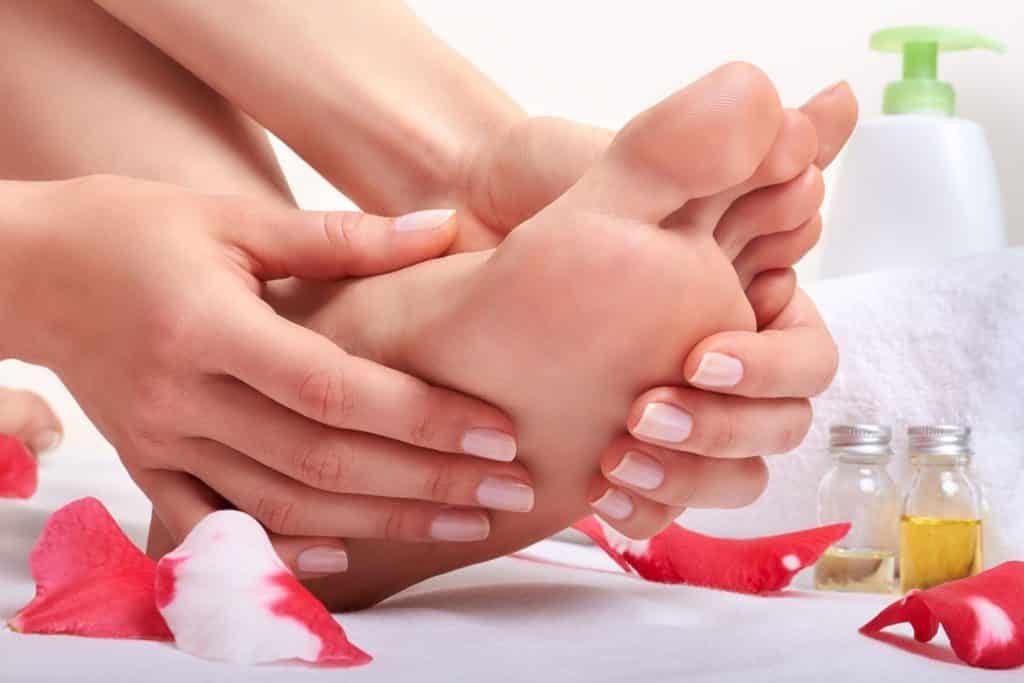Whether you want to recharge during the changing of the seasons, boost your vitality, restore your energy levels, or refresh your system, an Ayurvedic cleanse is a powerful ancient method that has stood the test of time. Not only is it engrained in millennia-old Eastern science, but modern Western scientists are now starting to uncover Ayurveda’s value in a present-day setting…
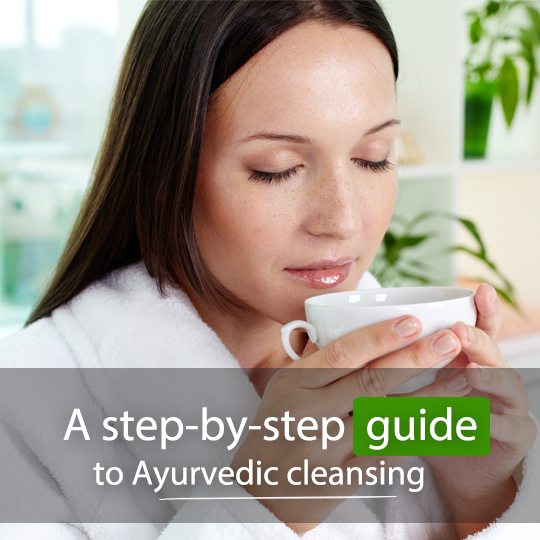
What Is Ayurveda?
This ancient holistic healing science originated in India around 5,000 years ago. It is a vast and detailed system designed to help people live a healthy, balanced life, built around a sophisticated knowledge of the human mind-body connection, which has since been accepted in mainstream Western science. Ayurveda is traditionally considered the science of life, and directly translates to ‘life knowledge’ from Sanskrit. It focuses on optimum physical health, along with mental and emotional wellbeing. As well as treating poor health with techniques such as cleansing and healing remedies, the emphasis is on becoming your healthiest self, both in the body and the mind, in order to avoid illnesses.
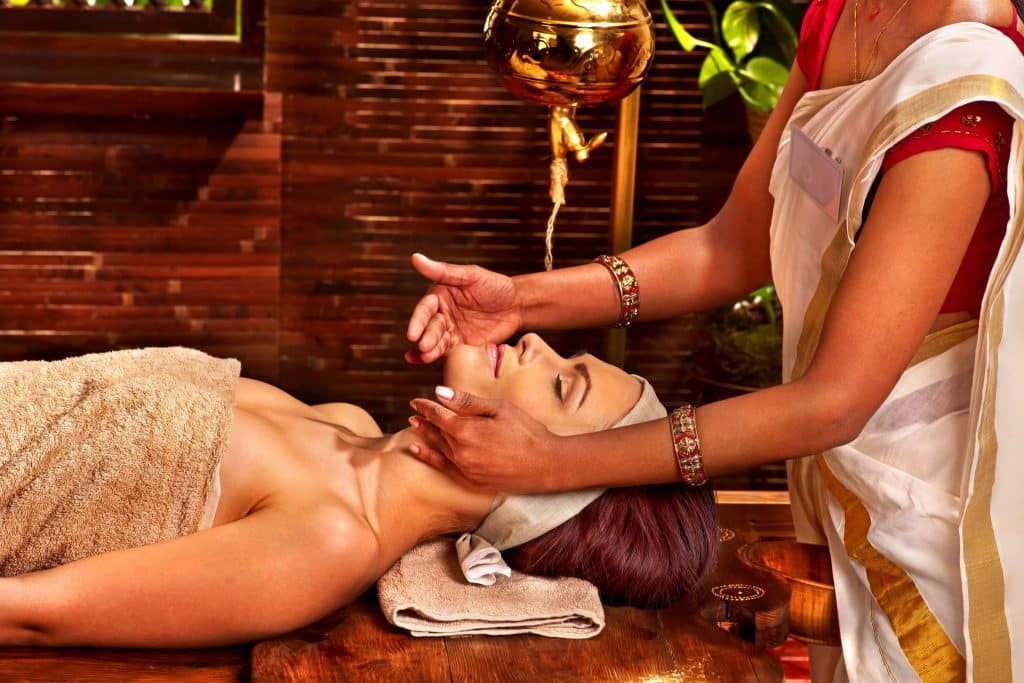
What Is An Ayurvedic Cleanse?
Put simply, an Ayurvedic cleanse is performed to draw out toxins and balance the body. According to the ancient Indian practice, your digestive fire has to digest everything, from sights, spells and sounds to tastes, emotions and skin exposures. In order to understand what that means, you need to understand the three doshas – vata, pitta and kapha, which, according to Ayurveda, need to be in balance. Vata energy reflects space and air, and is linked to movement, breath and circulation. Pita energy is comprised of fire and water, and when it is out of balance, can cause ulcers and inflammation. Kapha elements include earth and water, with characteristics including affection, compassion and a peaceful nature. An Ayurvedic cleanse means drawing toxins out of the body, and also drawing out excess vata, pitta and kapha from the tissues into the digestive tract to eliminate them, unblocking channels and imbalances. Sound a little too ‘out there’ for you? It’s actually not all that ‘out there’ anymore, and modern Western science is studying and using Ayurvedic science to understand health and nutrition better, especially in terms of prevention instead of treatment.
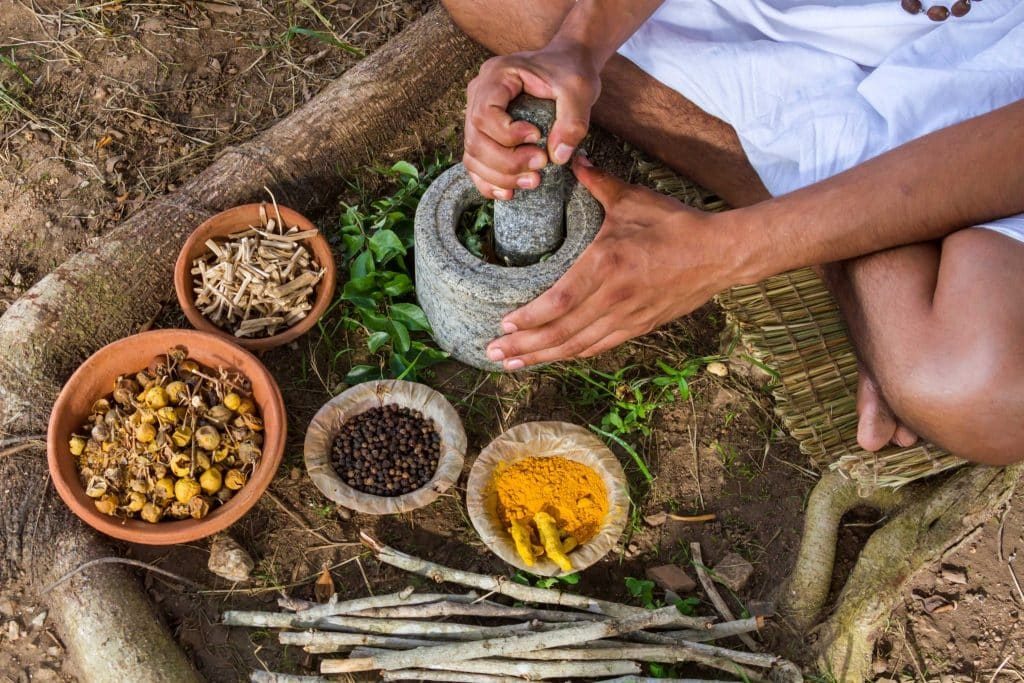
An Ayurvedic cleanse aims to reset your digestive fire, allowing it to rest and strengthen. By detoxifying and resting the system, cleansing also supports the body’s natural ability to remove built up toxins. A full Ayurvedic medical cleanse, called panchakarma involves five detoxifying treatments, including massage, herbal therapy, sound therapy, and other treatments and methods. It is highly individualized, depending on the needs, age, digestive strength, immune system and other factors of the person. This intense panchakarma cleanse should only ever be conducted under the guidance of an Ayurvedic practitioner. A simple food-based cleanse, on the other hand, is a great way of resetting the system and cleansing the body, and can be done at home. Traditionally, Ayurvedic cleansing would be done at the changing of the season (kind of like a spring clean for the body, but four times a year). This is the ideal, however, a food-based cleanse can be beneficial at any time when your body feels like it needs a clean out or health kick.

The body is extremely intelligent and works very hard to get rid of harmful substances and use beneficial nutrients where they are needed. However, with the inundation of environmental toxins, processed foods, suppressed emotions and psychological stress that it has to deal with nowadays, we are asking it to do a lot, and more than our ancestors’ bodies had to deal with. As a result, toxins do build up in the system to some degree, park themselves in the tissues, and mess with your health. An Ayurvedic cleanse works by minimizing the variety and complexity of potential toxins into the body, allowing it to rest, recuperate and repair. In response to the slowing down of toxic inputs, the body will immediately kick into action, deep cleaning your entire system.
How Do I Know If I Have A Build Up Of Toxins?
There are a number of basic and easily identified signs that your body needs a cleanse, including decreased energy levels, heavy coating on the tongue, bad body or breath odor, indigestion, excess flatulence, aches and pains, and a lack of concentration. Of course, your doctor should be your first port of call if you feel really out of the ordinary or unwell, but if it doesn’t turn out to be a diagnosable illness, you might just need to cleanse and detox, in which case, this practice might work for you.

Benefits Of An Ayurvedic Cleanse
The whole Ayurvedic system has an enormous array of health benefits, both physically and mentally, and an Ayurvedic cleanse has a number of its own, including:
- Elimination of toxins from the body
- Increase in energy levels
- Healthy weight management support
- Better and more restful sleep
- Calming the mind and relaxing the nervous system
- Promoting overall health and wellness
- Restoring balance in the body

A Step-By-Step Guide To A Food-Based Home Ayurvedic Cleanse
Again, it’s important to seek medical advice from your doctor if you are feeling particularly ill, tired or down. If there is no diagnosable problem, and you feel like you just need to cleanse and repair the body from the inside-out, you can try a four-step Ayurvedic cleanse.
Step 1 – Preparation
You should actually start preparing for your cleanse a few days before beginning. During the three days leading up to it, start improving your diet and eating habits, eliminating coffee, caffeine, tobacco, alcohol and any other recreational drugs. Either eliminate or significantly reduce your intake of processed foods, meat and refined sugar, and try to just eat whole foods like vegetables, fruits, wholegrains, nuts, legumes and seeds.

Step 2 – Active Cleansing
This is where you begin the actual cleanse after ‘warming up’ so to speak in the lead-up. Seven days is a good number to follow the Ayurvedic cleansing diet, where you can eat a very simplified mono-diet of kitchari, which is basmati rice and split mung beans. By only eating this cleansing meal, you will still have the strength and ability to maintain any essential responsibilities you have, like work and family commitments, but your digestive system will also be given a rest. This will allow your body to eliminate toxins and balance your vata, pitta and kapha energies.
Morning Routine
During the seven-day cleanse, rise early, scrape your tongue (details below) and brush your teeth. Sip a small amount of warm to hot water to cleanse the system and alert your digestive system that your overnight fast is over. You can then perform an Ayurvedic self-massage (details below), but this is optional – it gets the lymphatic system moving to rid the body of toxins. Another optional routine you can enjoy is a steam bath or sauna followed by a bath or shower. Perform some gentle exercise, like yoga stretches, but don’t push yourself physically. The focus of the cleanse is rest and rejuvenation. Next, eat your kitchari breakfast.

During The Day
You can eat kitchari throughout the day, as desired, but make sure to leave at least three hours between meals and try not to eat more than three meals per day. Also, do not overeat – you should feel satisfied but not too full. Avoid snacking, but if you find you need some extra fuel, go for fruit, raw nuts or a piece of avocado. You can add different vegetables into your kitchari each day to create a bit of variety, and if you are feeling deprived, you can eat oatmeal instead of kitchari for breakfast. Throughout the day, drink at least 10 cups of warm or hot fluids between meals, such as water and detox teas, to make sure your body has enough liquid to flush out toxins as they are released.
Evening Routine
About half-an-hour before bed, drink a cup of Triphala tea, mixing ½ a teaspoon of Triphala powder into a cup of boiling water, and letting it steep for at least half-an-hour. This herbal concoction aids digestion and helps clean out the system. Try to go to bed by 10pm during your cleanse so that your body has plenty of time to detox and rest.
Step 3 – Reintroduction
For the next three to five days following your cleanse, your body will continue to process and remove toxins from your body. Meanwhile, your digestive system will have adjusted to a very simplified and clean diet, and will be sensitive to over-stimulation or particularly harsh substances. Processed foods and alcohol are definitely no-go zones during this time. You need to slowly transition back to a diverse diet and your normal routine, giving your system time to adjust back to complex foods. Stick to whole foods, like you did during the preparation stage, and don’t eat too much of one thing without giving it 24 hours to show you how it’s coping. For example, dairy and meat can cause bad reactions if over-consumed during this time.

Step 4 – Rejuvenation
An Ayurvedic cleanse is traditionally performed at the changing of the season, so about four times a year. That means there is about three months between each cleanse. If your cleanse is a once-off, or performed whenever you feel like you need it, you should still follow this for the three months following your cleanse. This is an enjoyable time when you should feel refreshed, revitalized, energized and generally clean inside. Practitioners suggest following Ayurvedic food guidelines on a daily basis, which involves eating natural whole foods and consuming three meals a day. Get plenty of sleep so that your body can fast, clean itself and recharge. In Ayurvedic practices, people go to bed early and rise early – usually with the sun, but that is not necessarily realistic in certain, more extreme parts of the world where winter nights are long and summer nights are short. It is also suggested during this time that you meditate daily, exercise in the morning, with something gentle to moderate, like yoga or walking, practice deep breathing and avoid napping during the day.

Some Additional Considerations
When planning a cleanse, there are a number of things you should take into consideration. For example, if you are not in a rush, it’s good to perform it at the changing of the season, because your body will already be sensing a transition. You should also make sure that you are dealing with minimal stress during a cleanse, so if you are overseeing a merger at work, or have overseas relatives visiting, or are getting your children ready for a new school year, it’s probably best to get those stresses out of the way so that you can dedicate your attention to your cleanse at a different time. There should be minimal stresses and obligations during most of the seven days of active cleansing – it’s best to have the time off work if possible. And lastly, you should not perform the active cleanse while you are menstruating.

Keep Yourself Clean With These Ayurvedic Detox Methods
There are a number of other Ayurvedic detox practices that help keep your body healthy on the inside and out. You might stop some of these during your actual cleanse, but during the time between cleanses, they will keep you in tip-top shape…
Tongue Scraping
This Ayurvedic oral hygiene self-care ritual only takes a couple of minutes each morning. Certain toxins from the body surface in the mouth and on the tongue overnight as your system detoxes, which means that when you wake up, they are sitting on your tongue. If you don’t get rid of them, they are mostly reabsorbed back into the body, especially if you drink and eat straight away, because you will ingest them without realizing it. Research suggests that tongue scraping is significantly more effective in removing toxins and unwanted bacteria compared to brushing. A tongue scraper is a long, thin, flat metal instrument shaped like a ‘U’, and can be purchased easily in health food stores and online. Scraping should be performed in the morning before eating, and involves simply holding the two ends of the scraper with both hands, sticking out your tongue, and pulling it down along your tongue from the back to the tip in a firm but gentle stroke. Rinse and repeat five to 10 times, or until your tongue feels clean. This dental hygienic practice can be performed every single day, during an Ayurvedic cleanse, and in between cleanses.

Oil Pulling
The Ayurvedic dental technique of oil pulling was traditionally performed using ghee (clarified butter) or sesame oil, but modern research suggests coconut oil is more effective. An Irish study concluded that coconut oil was able to attack the bacteria that cause tooth decay with a natural antibiotic. When we wake up in the morning, our mouths are full of unwanted toxins and bacteria. Coconut oil pulling (swishing a teaspoon of coconut oil in your mouth for 15 to 20 minutes) naturally releases and catches that bacteria from the roof, sides of your mouth, around and in-between your teeth and from your tongue. You then spit the oil out (in the bin to avoid clogging the drain), and rinse your mouth with water. This should be done after tongue scraping and before eating or brushing your teeth. We think coconut oil pulling is so beneficial, in fact, that we have a whole article dedicated to its health benefits.

Warm Lemon Water
There are plenty of health benefits associated with sipping warm lemon water in the morning, from kick-starting your metabolism and aiding weight loss to boosting your immune system and hydrating the body after sleep. It is incredibly easy, and once you get used to it and remember to do it before breakfast (which may take a couple of weeks!) you’ll love the routine of it. Warm lemon water leaves you feeling fresh, hydrated, detoxed and ready for food. Simply boil the kettle, squeeze a little bit of lemon juice into a mug and add a slice of lemon, pour over the boiling water and let it steep and cool for 10 to 15 minutes. You only want it to be warm, not hot. If you’re worried about your teeth, you can drink the lemon water through a straw.

Dry Skin Brushing
This ancient Ayurvedic technique has a number of benefits, from ridding the body of dead skin cells, unclogging pores and eliminating toxins to improving circulation and stimulating the lymphatic system, which eliminates waste products from the body’s cells. It can also calm the nervous system, relieve muscle tension and reduce stress due to its meditative massage-type qualities. All you need is a natural (non-synthetic) brush with a long handle, which, like tongue scrapers, can be easily purchased online or in most health food stores. If possible, you should try to dry skin brush twice a day – in the morning and evening. Start by stripping off your clothes and stand either in the shower or on a tiled floor where you can easily get rid of the dead skin cells that will fall off. Start brushing from your feet up in long sweeping motions, always brushing towards your heart. Move from the feet, up the legs, torso, buttocks, back and arms. Overlap your strokes, brushing a few times in each area. Take a shower once you’ve finished and vary the temperature from quite cold to quite warm if you can stand it, which will stimulate your circulation even more. Pat your skin dry and moisturize, with a natural body butter or cream, such as coconut oil or cocoa butter. Make sure to clean your brush once a week with natural soap and water, and let it dry on the windowsill.
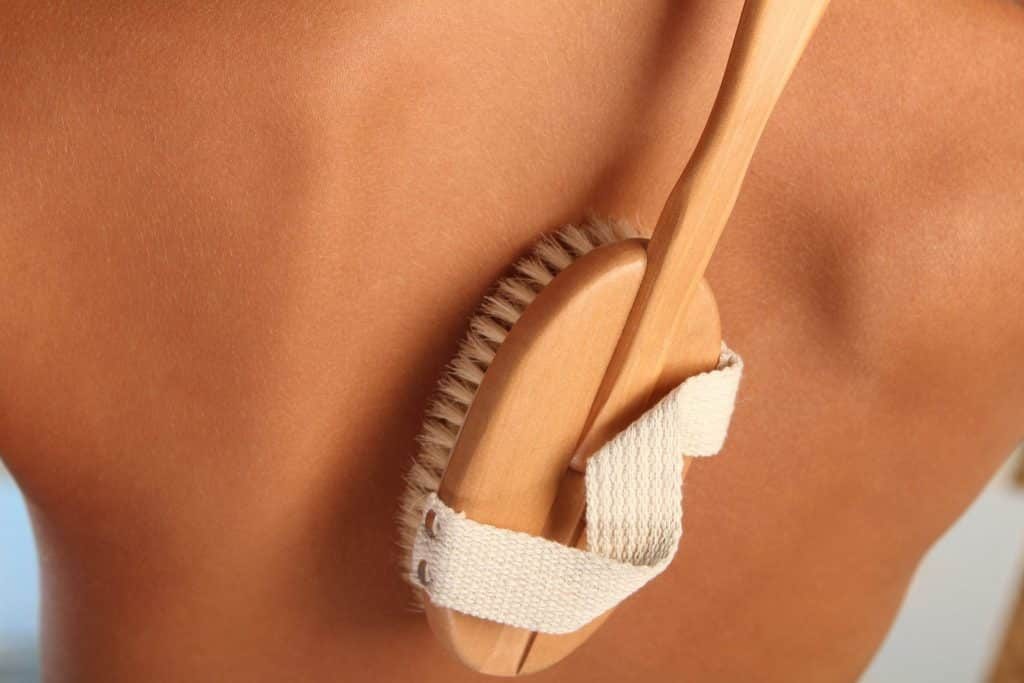
Warm Oil Self-Massage
This is another Ayurvedic ritual that can be performed during your cleanse, and between cleanses. A self-massage promotes circulation and helps remove built up toxins so that they can be eliminated from the body. The warm oil also calms the nervous system. There are different types of oils to use, depending on your doshas, but here is a guide on how to enjoy a self-massage. Warm about a ¼ cup of oil in a mug, making sure it feels comfortably warm on your wrist and not hot. Sit or stand in a warm room and start with the crown of your head, working the oil into your head in a circular motion, taking a few minutes to work around your entire scalp. Move down to your face and massage in circular movements around your forehead, temple, cheeks, jaw and ears. Move down to your arms and massage the oil in long strokes up the arms and in circular motions around the elbows. Next, massaging in long strokes up your legs, and in circular movements around the knees. Massage the abdomen and chest next, and finish with the feet. Sit and allow the oil to absorb for about 10 minutes afterwards and then use a mild soap to wash it off in the shower or bath. You don’t need to scrub the oil off your whole body – just wash the areas that will make you feel comfortable, and wash your hair if you don’t want it to look oily for the day.
